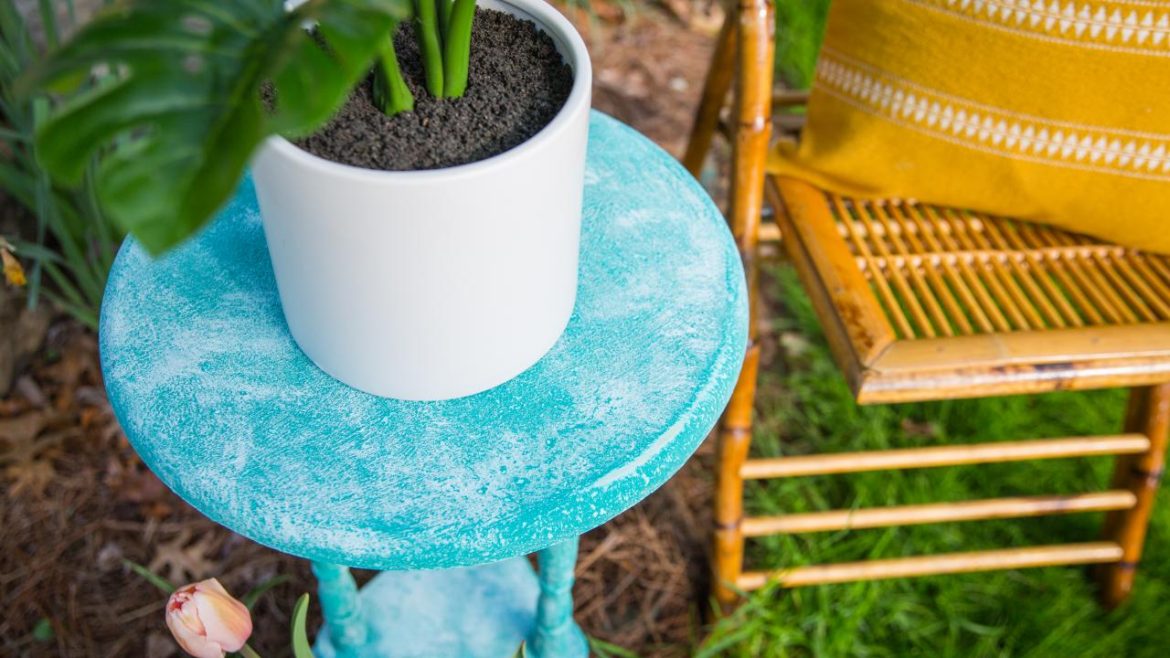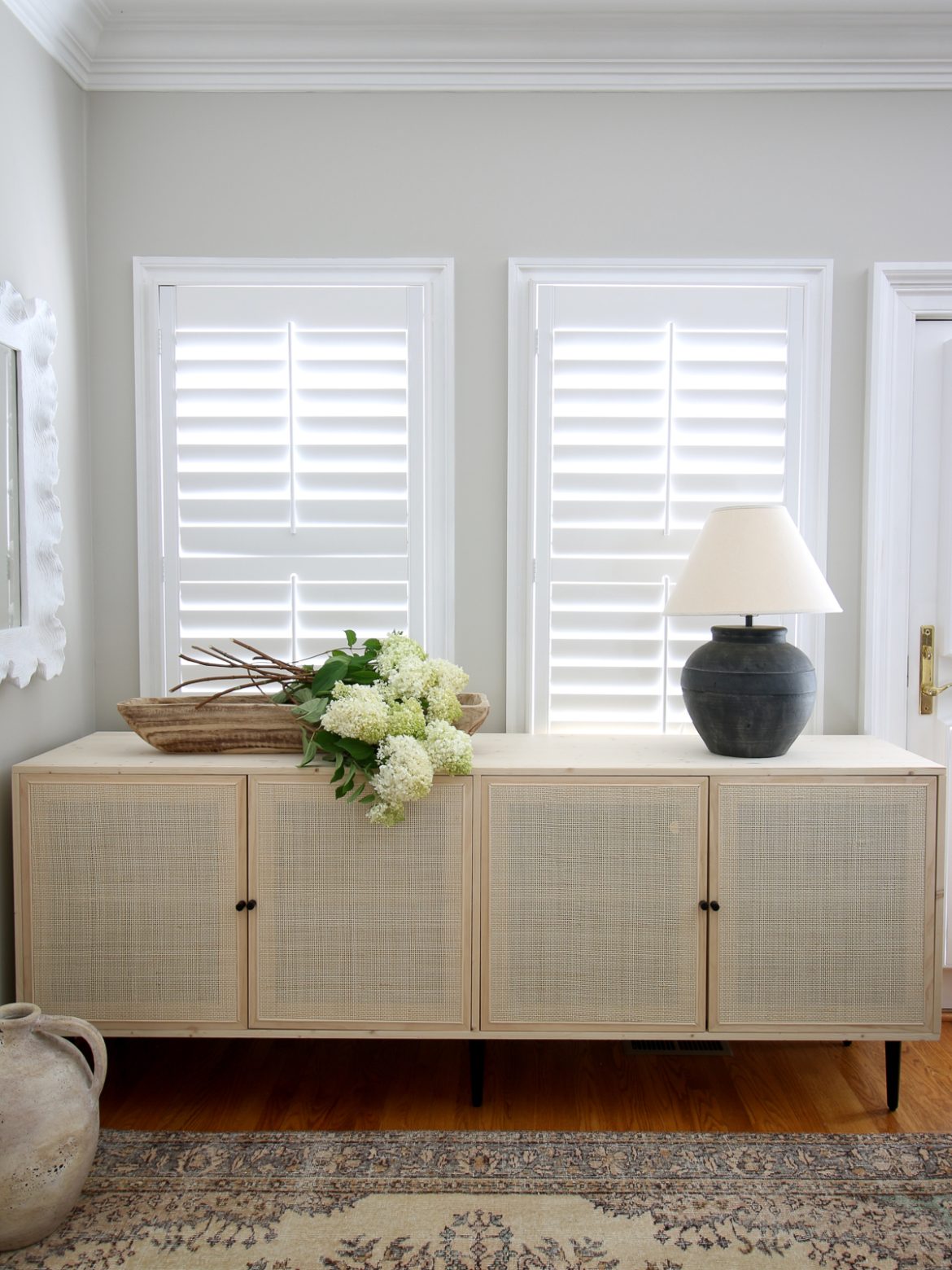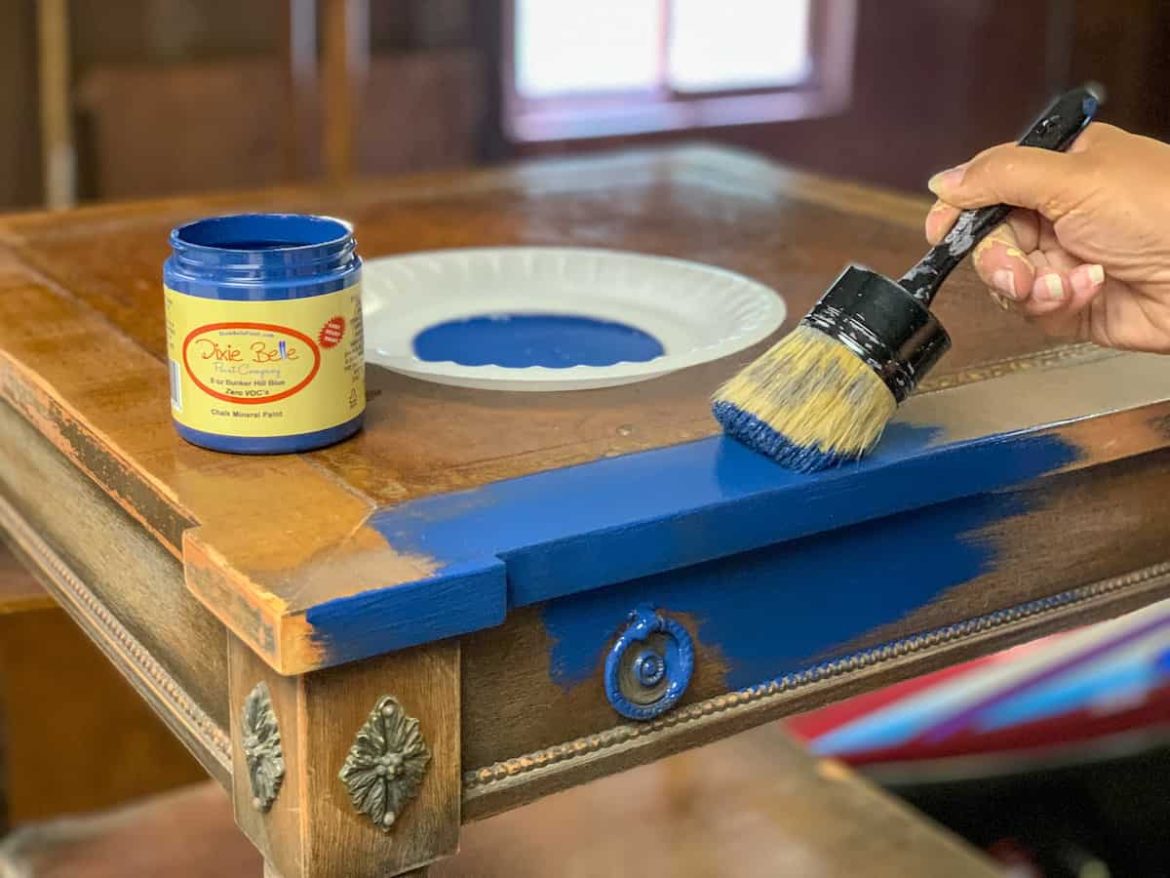Painting furniture can be a fun DIY project, but sanding can be real work. It creates dust, takes up much time, and requires some muscle power. But what if we told you that there’s a way to achieve a smooth and beautiful paint finish without all that sanding problem? We’ll find a simple and easy way to paint furniture without sanding.
If you want to refresh an old piece of furniture or add some color to your decor, our step-by-step instructions will make the process effortless. We’ll find the materials you’ll need, the effortless preparation steps, and the best painting techniques to get a professional-looking result. So, if you’re ready to change your furniture with a fresh coat of paint and skip the sandpaper, let’s find out. You’ll be amazed at how clear and effective this method can be.
Let’s start the process of changing your furniture.
Why Avoid Sanding?

Sanding furniture before painting can be messy and time-consuming work. It’s all about removing the old paint, which creates dust and needs a big cleanup. Some furniture, especially ones with fancy designs or odd shapes, can be hard to sand properly.
But don’t worry, there are easier and quicker ways to do it. You can use special chemicals to remove the old paint without the messy sanding part. Or you can use a good primer that sticks well to the old paint, so you don’t have to sand it at all. These methods make painting furniture easier and faster, even if you’re not a DIY expert, and they keep your furniture looking awesome. So, you can give your furniture paint, no sanding, if it’s a plain table or a fancy dresser.
Materials You’ll Need for Furniture Painting

Before you start, gather these things
- Furniture piece: Choose the item you want to paint, whether it’s a table, chair, dresser, or any other piece of furniture.
- Screwdriver and hardware: If your furniture has hardware like knobs or handles, remove them using a screwdriver.
- Cleaning supplies: To ensure a clean surface, you’ll need mild dish soap, warm water, and a cloth or sponge.
- Primer: A good quality bonding primer is important. It helps the paint stick to the surface without sanding.
- Paint: Choose your preferred paint color and finish. Latex or acrylic paints are excellent choices for furniture.
- Paintbrushes and rollers: High-quality brushes and rollers will give you a smoother finish.
- Painter’s tape: Use this to protect any areas you don’t want to paint.
- Drop cloth or newspaper: Protect your workspace against paint drips and spills.
Steps to Paint Furniture without Sanding
Follow these simple steps to make painting your furniture easy:
Step 1: Clean the Furniture

If you want your furniture to look nice, clean it well. Just use some mild soap and water to get clear of dirt, grease, or grime. After cleaning, be sure to wash it off and let it dry completely. This furniture paint, with no sanding, will leave your furniture looking clean and good to go. Regular cleaning helps your furniture last longer and stay in perfect shape. So, don’t forget to give it the best cleaning now and then to keep it looking great for years to come.
Step 2: Remove Hardware

When you want to paint your furniture, and it has knobs, handles, or things like that, here’s what you can do. If you can easily take them off, remove them before you start painting. This furniture paint, no sanding, will make the painting much clearer because you won’t get paint on it by accident. But what if they don’t come off easily? No problem. You can still protect them by using painter’s tape. Just wrap the hardware with this special tape, making sure it’s covered well. This way, your knobs and handles won’t get any paint on them while you’re giving your furniture a fresh look. Whether you’re a DIY fan or just cleaning your home, this tip will simplify painting.
Step 3: Apply Primer

Before you start painting your furniture, use a special primer. This helps furniture paint; no sanding helps the paint stick better and gives a shiny finish. Just follow the instructions on the primer to know how long to wait between coats of paint. This way, you’ll do perfect work, and your furniture will look awesome when you’re done. So, take your time, follow these easy steps, and you’ll have wonderfully painted furniture that you can be proud of. Don’t rush; instead, do each step carefully. Your patience and attention to detail will pay off, leaving you with a nice, refreshed living space that you’ll love.
Step 4: Paint

When your primer is all dry, it’s time to paint. Get the best paintbrush or roller for a smooth job. Put on the paint in thin, even layers, and don’t rush. Wait until each layer has dried before applying the next one. This way, your paint job will look great and stay that way for a long time. So, enjoy the process and see your space change with each coat of furniture paint, no sanding.
Step 5: Sand-Free Techniques

Some special paints from certain brands are handy. They make your things shiny without the need for tough sandpaper. So, if you want your projects to look wonderful without all that sanding work, these paints are a real-time and effort-saver. You’ll like how things turn out. Whether you’re fixing furniture, cleaning your home, or doing fun DIY things, these paints are the way to go. Take the convenience and the better look these wonderful paints bring to your projects. Make your crafting experience better with furniture paint, no sanding, and see your creations come out nice and effortless.
Step 6: Optional Distressing

To make your project look old and cool, do this after painting. Get some sandpaper or a sanding block, and use them gently. Don’t press too hard. Just lightly rub them on the surface to show a little bit of the base paint or wood underneath where you want it to look old. This furniture painting, with no sanding, makes your project look special and aged, giving it a vintage style. It’s an easy way to get that trendy, simple look without any hard steps. So, give it a try and play around with sanding.
Step 7: Protect and Seal

After you’re happy with how the paint looks and feels on your project, think about giving it extra protection. You can use a clear coating like polyurethane or furniture wax. This furniture paint no sanding step is especially important if you know your project will be used often and might get scratched or worn out. Polyurethane is like a strong shield for your paint, protecting it from damage. Furniture wax, on the other hand, gives a polished, protective layer and adds a little shine to your work. So, whether it’s a piece of furniture that gets a lot of use or something you want to keep looking nice, don’t forget to do this last step to ensure your paint job stays great for a long time.
Tips for a Successful Finish

1. Work in a Well-Ventilated Area
When you’re painting things, it’s really important to have fresh air around you to stay safe. Paint and sealant things can let out chemicals that are not good to breathe. Breathing in these chemicals can hurt your health. Ventilation is just a fancy word for removing these bad chemical fumes and bringing in fresh air. You can make fine ventilation happen by doing effortless things. Open windows and doors to let fresh air in and push the bad fumes out. If that’s not enough, you can wear a special respirator mask. So, when you’re working with furniture paint, no sanding or sealants, always make sure you have lots of fresh air around you to stay safe and healthy.
2. Use the Right Brushes
To make your painting look smooth, choose superb brushes or foam rollers. The type of paint you use decides which tools to use. For thick paints like oil-based ones, pick brushes with natural bristles. They’re amazing for these paints and make things shiny. If you’re using water-based paints like latex or acrylic, foam rollers are your best bet. They make it easy to put on an even and polished coat on your walls. So, don’t forget to choose the right brushes or foam rollers based on your paint type. It’s a simple step that can make a big difference in how your furniture is painted without sanding.
3. Follow the Manufacturer’s Instructions
Different kinds of paint have special instructions for how to put them on and how long you need to wait for them to dry. It’s important to pay attention to these guidelines to get the best results. When you’re painting, whether it’s walls, furniture, or art, take a moment to check the label or product info. They’ll tell you things like the best tools to use, how to get the surface ready, and the ideal conditions for painting. Drying times can also be different. Certain paints dry fast, while others need more time to dry. Hurrying this step can lead to streaks or uneven surfaces. Being patient when waiting for furniture to be painted and not sanding to dry is a good idea. Follow the suggested drying times to make sure your project turns out great. So, don’t forget, each kind of paint has its own rules. By following them closely, you’ll make your painting experience smoother and the results better.
4. Be Patient
If you rush through painting, your project might not turn out well. So, take it slow and be patient. When you paint furniture, let each coat of paint dry completely before adding more. Don’t skip this step! It might seem like it’s taking a while, but it’s worth it. Being patient and letting each coat dry well will make your project look much better and shinier. Remember that it’s better to wait a some longer than to hurry and end up with a messy result. So, go at a comfortable pace, give those paint layers plenty of time to dry, and you’ll be rewarded with a fantastic-looking piece of furniture. Your patience will pay off, and your project will turn out great.
Best Paint for Furniture without Sanding

1. Chalk Paint
Chalk paint is a great pick for cleaning up old furniture without the need for sanding. It sticks well to different surfaces and can give your pieces a nice, old-fashioned look. Brands like Annie Sloan and Rust-Oleum offer lots of pretty colors and finishes to choose from for your furniture redo. Chalk paint makes it clear to give your old things a fresh and stylish appearance, and that’s why many people who like DIY projects and home decorating enjoy using it. You won’t have to spend ages sanding, as chalk furniture paint does not go on smoothly and hides flaws well. Whether you want a simple, shabby, attractive vibe or a classy vintage style, chalk paint offers plenty of options. So, if you’re looking for an easy way to change your furniture and get that attractive, old-timey look, chalk paint is perfect—no more tough sanding work. Grab your paintbrush and enjoy the makeover.
2. Milk Paint
Milk paint is awesome because it makes things look flat, not shiny, and is effortless. You don’t even have to sand the surface before you paint it. If you’re considering which brands are good, look into General Finishes and Miss Mustard Seed’s Milk Paint. They’re known for doing perfect work, so whether you’re a beginner or have some experience, milk paint can help you make surfaces look flat and important. Milk paint is an amazing tool for furniture and decor. It’s perfect if you want a matte, non-shiny look. You won’t have to struggle with sandpaper before you paint. Just get some General Finishes or Miss Mustard Seed’s Milk Paint, and you’re ready to roll. This furniture paint with no sanding is famous for making great paint that works well. So, whether you’re just starting or have done this before, milk paint can help you make a beautiful flat finish that’ll make your things look fantastic.
3. Acrylic Paint
Acrylic paints are clear to use, and you can find them easily. They’re best for giving your furniture a makeover. Start with a fine base coat to make the furniture paint, no sanding stick well, and then put on a special layer to keep it looking fresh. Brands like Benjamin Moore and Behr make paints that can handle many uses, so your furniture will look good for a long time. The cool thing about acrylic paints is they come in lots of colors. Whether you want bright and brave or subtle and classy, acrylics work for both. They dry fast, so you won’t have to wait too long to see your furniture’s new look. So, get some acrylic paints and see your furniture become amazing. You’ll be surprised at how great it looks and how your space feels fresh and exciting.
4. Spray Paint
When it comes to painting small pieces of furniture or difficult little details, grab a spray can. Brands like Krylon and Rust-Oleum offer many colors and finishes in spray cans that make painting a snap. Spray paint is plain to use and gives you a smooth, even coat every time. Whether you’re fixing up a little table or adding some color to twisted designs, spray paint is the way to go. Just pick your favorite color, and you’re all set to make your furniture look amazing. Give it a try, and you won’t be let down. Your furniture will look fantastic with some effort. Spray furniture paint, no sanding is a must-have tool for people who love DIY and decorating their homes. Enjoy the simplicity and accuracy of spray painting for all your furniture projects.
Conclusion
Painting furniture without sanding doesn’t have to be a difficult task. We’ve learned some simple steps to change your old, tired furniture into something fresh and stylish. First, clean your furniture thoroughly to get clear of dirt and grime. Then, choose the right paint and primer for your project. Apply a primer if needed; it helps the furniture paint, and no sanding sticks better. When painting, use even swipe and take your time to avoid drips.
Let each coat completely dry before adding more. Don’t forget to protect your work area with dirty clothes and wear old clothes. And when you’re done, clean your brushes and rollers immediately with soap and water. So, there you have it, an easy way to give your furniture a new look without any difficulty of sanding. It’s a budget-friendly, time-saving option that anyone can do.
Don’t forget you can use different colors and finishes to match your style.































































